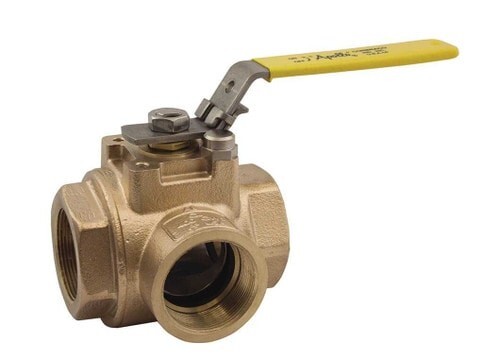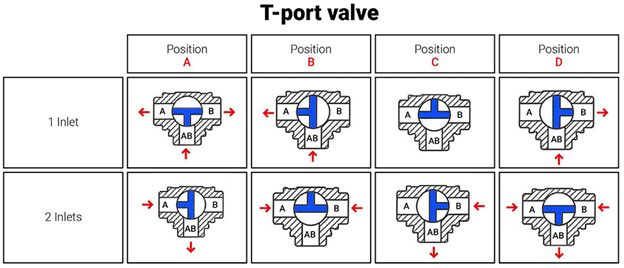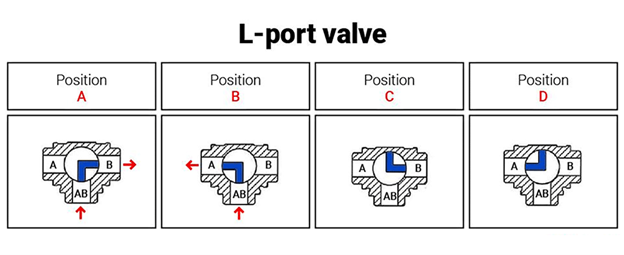
Manual
Manual 3-Way Ball Valves
Shop Manual 3-Way Ball Valves Shop Now
Electric
3 Way Electric Ball Valves
Shop 3 Way Electric Ball Valves Shop Now
Pneumatic
Pneumatic 3-Way Ball Valves
Shop Pneumatic 3-Way Ball Valves Shop Now
L-Ported
L Valves
Shop L Valves Shop Now
T-Ported
T Ported 3-Way Ball Valves
Shop T Ported 3-Way Ball Valves Shop Now3-Way Ball Valve Designs
Three way valves are designed to mix, divert or select fluid streams, or direct them to relevant process equipment. As their name suggests, 3-way ball valves feature three ports, which may be connected to pipes, fittings or other equipment. Connections are typically threaded, but may also be flanged or welded, to suit the application.
Three way ball valves are available in the following categories:
Mixing Valves: Combines two inlet fluid streams into a single outlet stream.
Diverting Valves: Diverts a single inlet fluid stream to either one of two outlet ports.
Selecting Valves: Selects one of two inlet fluid streams, and moves the selected stream through the outlet port.
3-way valves may be operated manually with a lever, which rotates through a quarter turn (90 degrees) or half turn (180 degrees) to move the valve to the desired position. Three way ball valves may also be controlled using valve actuators, which allow for automated operation and remote control.

Types of 3-Way Valves
Three way ball valves are often categorized by the valve internal flow path, which is essentially the shape of the opening in the valve's ball element, which governs the path that fluid flows. The most common three way ball valve designs are T-port and L-port.
T-Port Ball Valves
T ported 3-way ball valves feature a ball with a T-pattern bore through the ball. T port ball valves provide complex flow control, including flow splitting, flow mixing, flow diverting or selecting functionality. The image below (from pumpsandsystems.com) provides a visual representation of a T-ported three way ball valve's flow capability.

T-port valves always have a potential fluid path regardless of valve closure setting, meaning that they can never be fully closed.
L-Port Ball Valves
L ported 3-way ball valves are valves with an L-shaped bore through the ball. L port ball valves are used for diverting and selecting applications, but cannot operate as mixing valves. They feature two 'open' settings, which directs fluid flow to the right or left. The image below (from pumpsandsystems.com) provides a visual representation of a L-ported three way ball valve's flow path.

Applications of 3-Way Valves
Because 3-way ball valves are reliable, user-friendly and fulfill a number of process functions, they are commonly found in industrial settings. Three-way ball valves offer a simple, economic means of providing shut-off and flow direction control within a single valve body, and are versatile enough for use in many applications, including:
- Oil, gas and petrochemicals
- Water and waste water systems
- Food and beverage industries
- Heating, ventilation and air conditioning (HVAC)
Three way ball valves are used in applications with more than one process fluid, or to divert fluid in two different directions. Each of the three ports are assigned as inlets and outlets, depending on the flow direction. Hence, a three way valve may have one outlet and two inlets, or one inlet and two outlets.
Three way ball valves have three ports and can be manually operated with a lever, or automated with an electric or pneumatic actuator. Three way ball valves can do so many things, like:
- Shut off flow
- Switch flow between two sources
- Combine flow from two sources
- Alternate flow between two destinations
- Divert flow from one source to another destination
- Split flow from one source to two destinations
